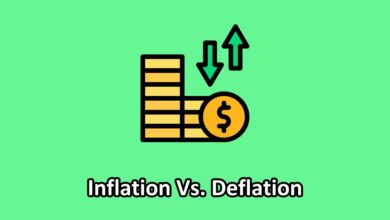Difference Between Trading and Investing [With Table]
Curious about the difference between trading and investing? You’re not alone! Many folks find these terms a bit fuzzy. But fear not, we’re here to make it crystal clear. In this blog, we’ll break down trading and investing in simple, everyday language.
In the world of finance, understanding the difference between trading and investing is crucial for anyone looking to build and manage their wealth. Whether you’re a seasoned investor or just starting on your financial journey, grasping these distinctions can significantly impact your financial decisions.
Trading Vs. Investing (A Comparison)
| Trading | Investing |
|---|---|
| Trading involves actively buying and selling financial assets (such as stocks, bonds, cryptocurrencies, or commodities) within relatively short time frames, often minutes, hours, or days. | Investing is a longer-term strategy where individuals or institutions buy financial assets with the intention of holding them for an extended period, typically years or even decades. |
| Trading involves short-term activities, where traders buy and sell assets over minutes, hours, or days, attempting to profit from short-term price fluctuations. | Investing is a long-term strategy focused on holding assets for years or even decades, with the goal of building wealth through long-term growth and income. |
| Traders face higher short-term risk because of frequent market moves and the need for quick decision-making. | Investors are more concerned with the long-term stability and performance of their investments, often willing to endure short-term market fluctuations for potential long-term gains. |
| Traders primarily aim to make short-term profits by capitalizing on price movements, regardless of the asset’s long-term potential. | Investors seek long-term growth and income, looking for assets that can appreciate in value over time and provide dividends or interest payments. |
| Trading requires active monitoring and decision-making, with traders frequently buying and selling assets based on technical and fundamental analysis. | Investing typically involves a more passive approach, with less frequent adjustments to a diversified portfolio, as investors rely on the asset’s inherent growth potential. |
| Traders often deal with a wide range of assets, including stocks, commodities, currencies, and cryptocurrencies, depending on market opportunities. | Investors diversify their portfolios across various asset classes such as stocks, bonds, real estate, and possibly other investment vehicles to spread risk. |
| Successful trading demands emotional discipline as traders must make quick decisions under pressure, handle losses, and avoid impulsive actions. | Investing requires patience and the ability to withstand market downturns without panic selling. |
Definition of Trading
Trading is the art of buying and selling financial instruments, such as stocks, commodities, or currencies, with the primary goal of profiting from short-term price fluctuations. Traders typically aim to capitalize on market volatility and may hold assets for minutes, hours, or days rather than years.
Characteristics of Trading
- Short-Term Focus: Traders are more concerned with short-term price movements and may make multiple trades in a single day.
- Active Decision-Making: Trading involves constant monitoring of market conditions and making quick decisions.
- Risk Tolerance: Traders often have a higher risk tolerance, as they are exposed to market fluctuations on a frequent basis.
Types of Trading
- Day Trading: Day traders open and close positions within the same trading day, aiming to profit from intraday price fluctuations. They often make numerous trades in a single day and rely on technical analysis and short-term indicators to make quick decisions.
- Swing Trading: Swing traders hold positions for several days to weeks, seeking to capture short- to medium-term price swings. They aim to capitalize on price patterns and trends, often using both technical and fundamental analysis.
- Scalping: Scalpers make numerous small trades throughout the day to capture tiny price movements. Their goal is to accumulate small profits from each trade, which can add up over time. Scalping requires rapid decision-making and a keen eye for short-term market movements.
- Position Trading: Position traders take a longer-term approach, holding positions for weeks, months, or even years. They focus on fundamental analysis and macroeconomic factors to identify assets with strong growth potential over the long term.
Definition of Investing
Investing, on the other hand, involves purchasing assets with the expectation of generating long-term wealth. Investors typically hold assets for an extended period, often years or decades, with the intention of benefiting from the asset’s potential for growth and income.
Characteristics of Investing
- Long-Term Perspective: Investors focus on the long-term appreciation of their assets, aiming for gradual, sustainable growth.
- Passive Approach: Investors generally take a more hands-off approach, periodically reviewing and adjusting their portfolios.
- Risk Tolerance: Investors may have a more conservative risk tolerance, as they are less concerned with short-term market fluctuations.
Types of Investing
- Value Investing: Value investors seek undervalued stocks with strong fundamentals. They aim to buy these stocks at a discount to their intrinsic value, expecting them to appreciate over time. Value investing often involves a patient, buy-and-hold strategy.
- Growth Investing: Growth investors look for companies with high growth potential, even if their current valuations are relatively high. They believe that these companies will continue to expand and generate substantial earnings, leading to long-term capital appreciation.
- Income Investing: Income investors prioritize generating regular income from their investments. They often invest in assets like dividend-paying stocks, bonds, or real estate investment trusts (REITs) that provide a steady stream of income. This approach is favored by those seeking cash flow.
- Passive Investing: Passive investors take a hands-off approach by investing in index funds or exchange-traded funds (ETFs). These funds track specific market indices, providing broad market exposure. Passive investors benefit from diversification and lower management fees while avoiding the need for active stock selection.
- Real Estate Investing: Real estate investors purchase physical properties or invest in real estate investment trusts (REITs) to generate income and potentially benefit from property appreciation. Real estate investing can offer both rental income and long-term capital gains.
- Alternative Investments: Some investors explore alternative investments such as commodities, hedge funds, or private equity. These investments often have lower liquidity but can provide diversification and the potential for higher returns.
Key Differences Between Trading and Investing
Let’s delve deeper into the six key differences that set trading and investing apart:
- Risk Exposure: Traders face higher short-term risk, whereas investors are more concerned with long-term stability.
- Goal: Traders aim for short-term profits, while investors seek long-term growth and income.
- Approach: Trading requires active, frequent decision-making, whereas investing takes a more passive approach.
- Emotional Discipline: Successful trading demands the emotional discipline to handle the stress of quick decision-making while investing requires patience and the ability to weather market downturns.
Trading Strategies
Trading strategies vary widely, but they all revolve around the idea of capitalizing on short-term market movements. Here are some common trading strategies:
- Day Trading: Day traders open and close positions within the same trading day, aiming to profit from intraday price fluctuations.
- Swing Trading: Swing traders hold positions for several days to weeks, seeking to capture short- to medium-term price swings.
- Scalping: Scalpers make numerous small trades throughout the day to capture tiny price movements, accumulating profits over time.
Traders often employ technical analysis, studying charts and indicators, along with fundamental analysis to inform their decisions.
Investment Approaches
Investment approaches are more focused on long-term growth and stability. Here are three common investment strategies:
- Value Investing: Value investors seek undervalued stocks with strong fundamentals, aiming to buy low and hold for the long term.
- Growth Investing: Growth investors look for companies with high growth potential, even if their current valuations are higher, with the expectation that future earnings will justify the price.
- Passive Investing: Passive investors opt for a hands-off approach by investing in index funds or ETFs, providing broad market exposure with lower management fees.
Each approach has its merits and suits different investor profiles.
Risk Management in Trading and Investing
Both trading and investing involve risk, but risk management strategies differ. Traders often use stop-loss orders and set strict risk-reward ratios for each trade to limit losses. Investors focus on diversification, asset allocation, and periodic portfolio rebalancing to manage long-term risk.
Risk assessment and mitigation are critical aspects of both practices to protect capital and achieve financial goals.
Trading Vs. Investing: Which One to Choose
Deciding whether to trade or invest depends on various factors, including your financial goals, risk tolerance, and time commitment. Here are some considerations:
- Financial Goals: Determine whether your objective is short-term income or long-term wealth accumulation.
- Risk Tolerance: Assess your comfort level with market volatility and potential losses.
- Time Commitment: Consider how much time you can dedicate to monitoring and managing your investments.
Ultimately, the choice between trading and investing should align with your unique financial circumstances and aspirations.
Conclusion
In conclusion, trading and investing serve distinct purposes in the financial world. Trading is all about short-term gains, while investing is a long-term wealth-building strategy. Understanding these differences empowers you to make informed financial decisions that align with your goals and risk tolerance. Whether you choose to trade or invest, remember that a well-thought-out strategy and disciplined approach are key to success in the world of finance.
FAQs About Trading Vs. Investing
Which is Better, Investing or Trading?
The choice between investing and trading depends on your financial goals and risk tolerance. Neither is inherently “better” than the other; they serve different purposes.
Investing is better suited for those seeking long-term wealth accumulation. It involves buying assets with the expectation of gradual, sustained growth. It’s generally less risky but requires patience.
Trading, on the other hand, is for those looking to profit from short-term price fluctuations. It can be riskier due to its focus on short-term gains, but it offers the potential for quicker returns.
Can an Investor be Called a Trader?
While investors and traders have distinct objectives and strategies, some individuals may engage in both activities at different times or even simultaneously. So, yes, an investor can also be called a trader if they actively buy and sell assets for short-term gains alongside their long-term investments.
Which Method Earns More Profit, Traders or Investors?
The potential for profit varies between traders and investors.
Traders aim to generate quick, short-term profits, which can be substantial if they make well-timed decisions. However, it comes with higher risk due to frequent market exposure.
Investors focus on long-term growth and income, aiming for more gradual but potentially significant profits over time. Investors often have a more conservative risk tolerance.
The choice between earning more profit depends on individual skill, market conditions, and risk appetite. Some traders may earn more in a short period, while investors may see substantial gains in the long run. It’s essential to align your strategy with your financial goals and risk tolerance.
Is Trading Riskier than Investing?
Yes, trading is generally considered riskier than investing. Trading involves frequent buying and selling of assets, often within short timeframes, which exposes traders to higher market volatility and potential losses. Investors, on the other hand, typically adopt a long-term approach, which can help mitigate short-term market fluctuations and reduce overall risk.
Can I switch from Being a Trader to an Investor, or Vice Versa?
Absolutely, many individuals transition between being traders and investors based on their changing financial goals and circumstances. You can switch from being a trader to an investor by reallocating your assets to focus on long-term growth and stability. Conversely, you can shift from being an investor to a trader by actively engaging in short-term trading strategies. The key is to understand the differences, adapt your approach, and make informed decisions based on your financial objectives.



2 Comments